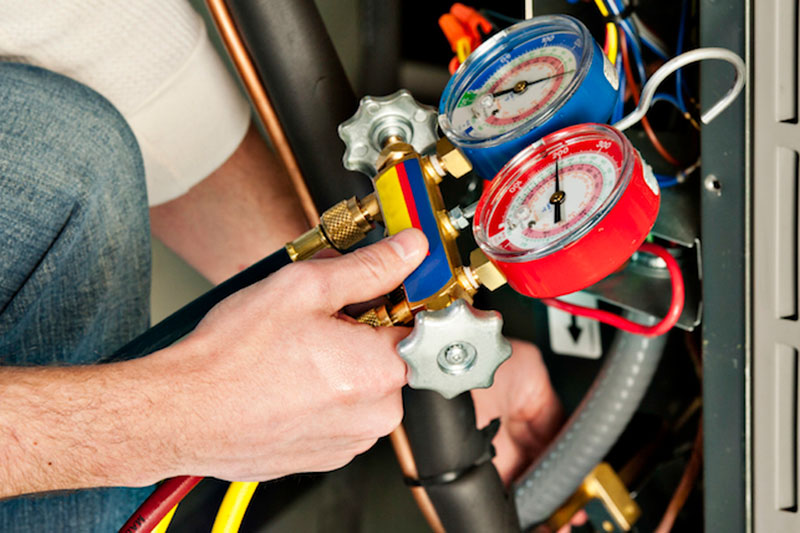
You might not think much about how your air conditioner operates, but it needs refrigerant to keep your house fresh. This refrigerant is controlled by environmental rules, as it contains chemicals.
Depending on when your air conditioner was added to your home, it may need R-22, R-410A or R-32 refrigerant. We’ll go over the differences and which air conditioner refrigerants are being phased out in Delray Beach, as well as how these phaseouts have on influence on you.
What’s R-22 and Why Is It Phased Out?
If your air conditioner was put in before 2010, it possibly contains Freon®. You can learn if your air conditioner contains it by calling us at 561-269-2261. You can also inspect the name plate on your air conditioner condenser, which is found outside your home. This sticker will have information on what type of refrigerant your AC uses.
Freon, which is also known as R-22, contains chlorine. Scientists consider this chemical to be harmful to the earth’s ozone layer and one that prompts global warming. The Environmental Protection Agency, which governs refrigerants in the United States, banned its manufacture and import in January 2020.
I Use an Air Conditioner with R-22. Do I Need to Get a New One?
It depends. If your air conditioning is cooling correctly, you can continue to run it. With yearly air conditioner maintenance, you can expect your air conditioning to operate around 15–20 years. However, the Department of Energy notes that removing a 10-year-old air conditioner could save you 20–40% on summertime cooling bills!
If you don’t install a new air conditioner, it can lead to a problem if you need air conditioning repair in the future, specifically for refrigerant. Repairs may be pricier, because only small levels of recycled and reclaimed R-22 is on hand.
With the discontinuation of R-22, a lot of new air conditioners now rely on Puron®. Also called R-410A, this refrigerant was developed to keep the ozone layer in good shape. Because it needs a different pressure level, it doesn’t work with air conditioners that rely on R-22 for cooling.
However, Puron still has the likelihood to lead to global warming. Because of that, it might also sometime be discontinued. Although it hasn’t been mandated yet for residential air conditioners, it’s expected sometime this decade.
What Refrigerant Will Take Over R-410A?
In preparation of the discontinuation, some companies have begun using R-32 in new air conditioners. This refrigerant rates low for global warming potential—approximately one-third less than R-410A. And it also lowers energy use by around 10%, according to the Intergovernmental Panel on Climate Change’s Fourth Assessment Report. That’s savings that may be forwarded on to you through your energy expenses.
Kilbourne Heating & AC Can Provide Support with All Your Air Conditioning Needs
In short, the alterations to air conditioner refrigerant probably won’t concern you very much until you have to have repairs. But as we went over beforehand, refrigerant-related repairs might be more costly since there are the low levels on hand.
Not to mention, your air conditioner typically breaks down at the worst time, often on the muggiest day when we’re receiving lots of other calls for AC repair.
If your air conditioner uses a phased out refrigerant or is aging, we advise upgrading to an up-to-date, energy-efficient air conditioner. This delivers a trouble-free summer and can even lower your cooling bills, especially if you get an ENERGY STAR®-rated model. Plus, Kilbourne Heating & AC offers many financing programs to make your new air conditioner even more affordable. Contact us at 561-269-2261 to begin right away with a free estimate.
